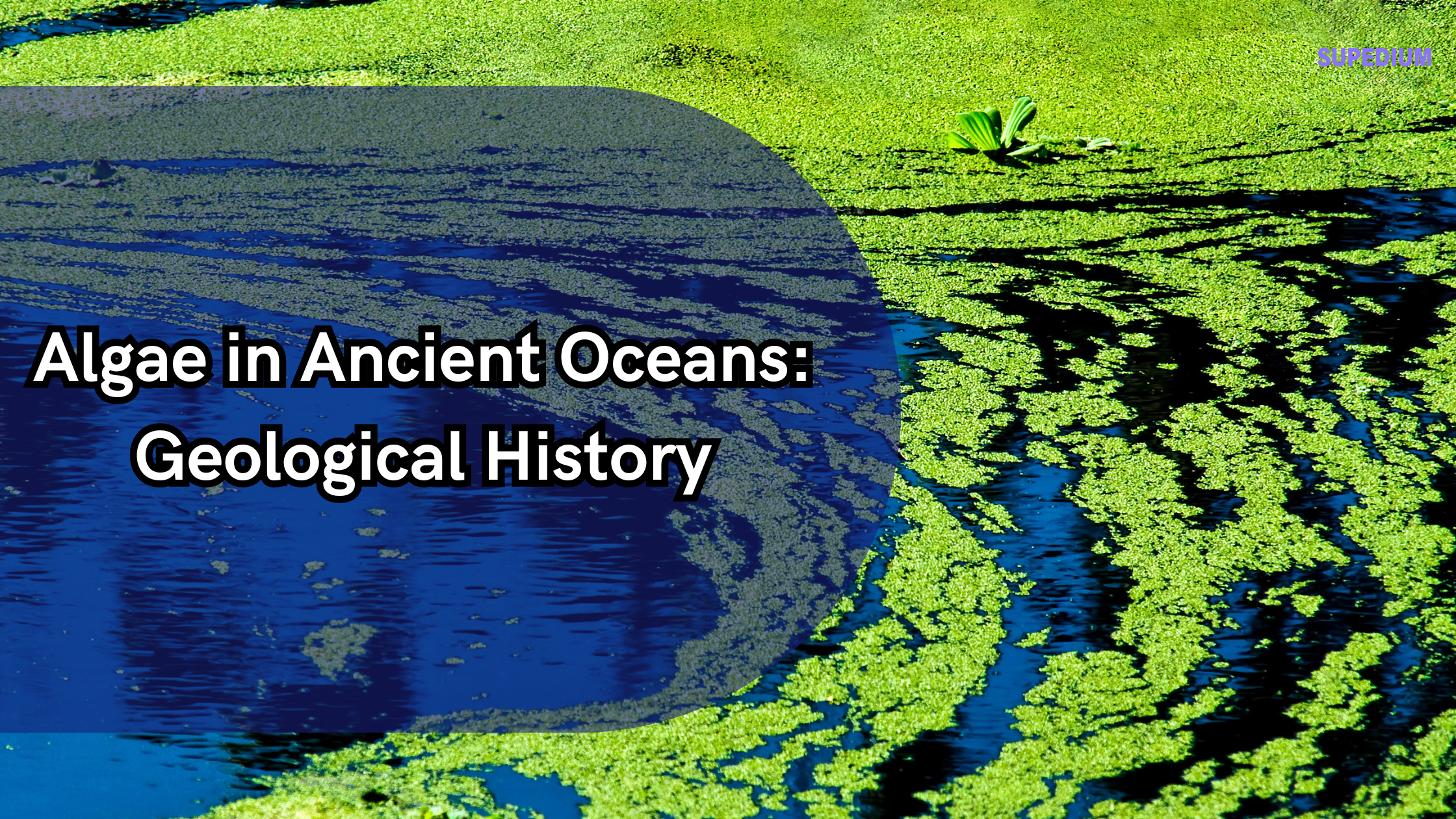Table of Contents
![]()
Introduction
Algae, simple photosynthetic organisms that inhabit a wide range of aquatic environments, have played a crucial role in the history of Earth’s oceans. From the earliest days of our planet, algae have contributed to ecological and geological processes that shaped marine environments and influenced global climate. This article explores the geological history of algae, highlighting their evolution, impact, and significance in ancient oceans.
Early Life Forms and the Origin of Algae
Precambrian Era
The Precambrian Era, spanning from the formation of Earth about 4.6 billion years ago to approximately 541 million years ago, marks the earliest chapter in the history of life. During this time, the primordial oceans were teeming with simple life forms. The first significant photosynthetic organisms were cyanobacteria, often referred to as blue-green algae, which appeared around 3.5 billion years ago. These early microorganisms played a crucial role in shaping the Earth’s atmosphere by producing oxygen through photosynthesis.
Evolution of Cyanobacteria
Cyanobacteria are among the oldest known life forms and their fossil evidence can be found in stromatolites—layered structures formed by microbial activity. These ancient fossils provide insights into the role of cyanobacteria in early ocean ecosystems and their contribution to the Great Oxidation Event, which dramatically increased Earth’s atmospheric oxygen levels around 2.4 billion years ago.
The Paleozoic Era
Cambrian Period
The Cambrian Period (541–485 million years ago) marked a significant evolutionary leap with the appearance of more complex algae. During this time, the oceans saw the rise of various forms of algae, including the early red and green algae. Fossil evidence from this period indicates that algae began to diversify, influencing the development of marine habitats and ecosystems.
Ordovician to Silurian Periods
In the Ordovician (485–443 million years ago) and Silurian (443–419 million years ago) periods, marine algae continued to diversify. Algae played a crucial role in the formation of early reefs, which were essential to the development of marine biodiversity. The interaction between algae and early marine life forms helped establish complex ecological relationships and influenced ocean chemistry.
Devonian Period
The Devonian Period (419–359 million years ago) witnessed further evolution of algae, with the emergence of larger and more complex forms. This period is known for its significant advances in plant life, including the development of the first true marine algae. The proliferation of algae during the Devonian had a profound impact on ocean ecosystems, contributing to the establishment of diverse marine environments.
The Mesozoic Era
Triassic Period
The Triassic Period (252–201 million years ago) saw the continued evolution of algae, with the appearance of new species and forms. Algae interacted with emerging marine life, influencing the development of marine ecosystems. The presence of algae during this period played a role in shaping the ocean’s ecological landscape.
Jurassic Period
The Jurassic Period (201–145 million years ago) marked a significant rise in marine algae diversity. This era saw the establishment of early coral reefs, with algae playing a key role in their development. The interaction between algae and corals contributed to the formation of complex reef systems that supported a wide range of marine life.
Cretaceous Period
The Cretaceous Period (145–66 million years ago) was characterized by the evolution of key algal groups, including macroalgae and phytoplankton. These groups influenced oceanic conditions and climate, playing a crucial role in the marine food web and biogeochemical cycles.
The Cenozoic Era
Paleogene Period
The Paleogene Period (66–23 million years ago) saw changes in algal communities due to shifting climates. The development of new algal species during this time had a significant impact on marine ecosystems, influencing ocean chemistry and contributing to the evolution of modern algal groups.
Neogene Period
The Neogene Period (23 million years ago to the present) marked the evolution of modern algal groups and their influence on ocean chemistry and climate. The diversification of algae during this period has continued to shape marine environments and contribute to the global climate system.
Geological Evidence of Ancient Algae
Fossil Records
Fossil records provide valuable insights into the history of ancient algae. Algal fossils, including microfossils and macroscopic fossils, offer clues about the evolution and diversity of algae throughout geological history. Key fossil sites, such as stromatolite deposits and algal mats, provide evidence of early algal life and its impact on ancient marine environments.
Molecular and Isotopic Evidence
In addition to fossils, molecular and isotopic evidence helps scientists study ancient algae. Biomarkers and chemical signatures found in rocks and sediments provide insights into the presence and activity of ancient algae. Techniques such as geochemical analysis and isotopic dating help reconstruct the history of algal life and its role in Earth’s history.
Impact of Ancient Algae on Earth’s History
Oxygenation of the Atmosphere
One of the most significant impacts of ancient algae was their contribution to the oxygenation of Earth’s atmosphere. Cyanobacteria, through their photosynthetic activity, played a crucial role in the Great Oxidation Event, which significantly increased atmospheric oxygen levels. This event had profound effects on the development of life on Earth and the evolution of complex organisms.
Climate Regulation
Ancient algae also played a role in climate regulation through processes such as carbon sequestration. Algae contributed to the removal of carbon dioxide from the atmosphere and its incorporation into oceanic and terrestrial sediments. This process influenced global climate patterns and helped regulate Earth’s climate over geological timescales.
Conclusion
The geological history of algae provides valuable insights into the evolution of marine ecosystems and the impact of these ancient organisms on Earth’s climate and atmosphere. From their early origins in the Precambrian to their diverse roles in the Mesozoic and Cenozoic eras, algae have been integral to the development of marine environments. Continued research into ancient algae will deepen our understanding of their contributions to Earth’s history and their relevance to modern and future marine ecosystems.
Share This





Be the first to comment